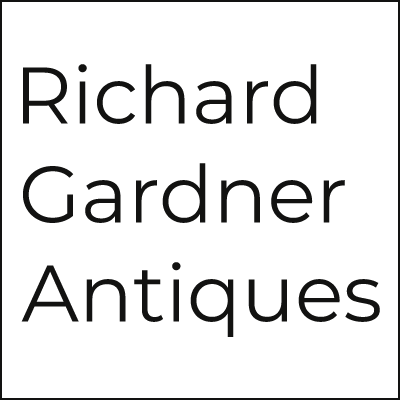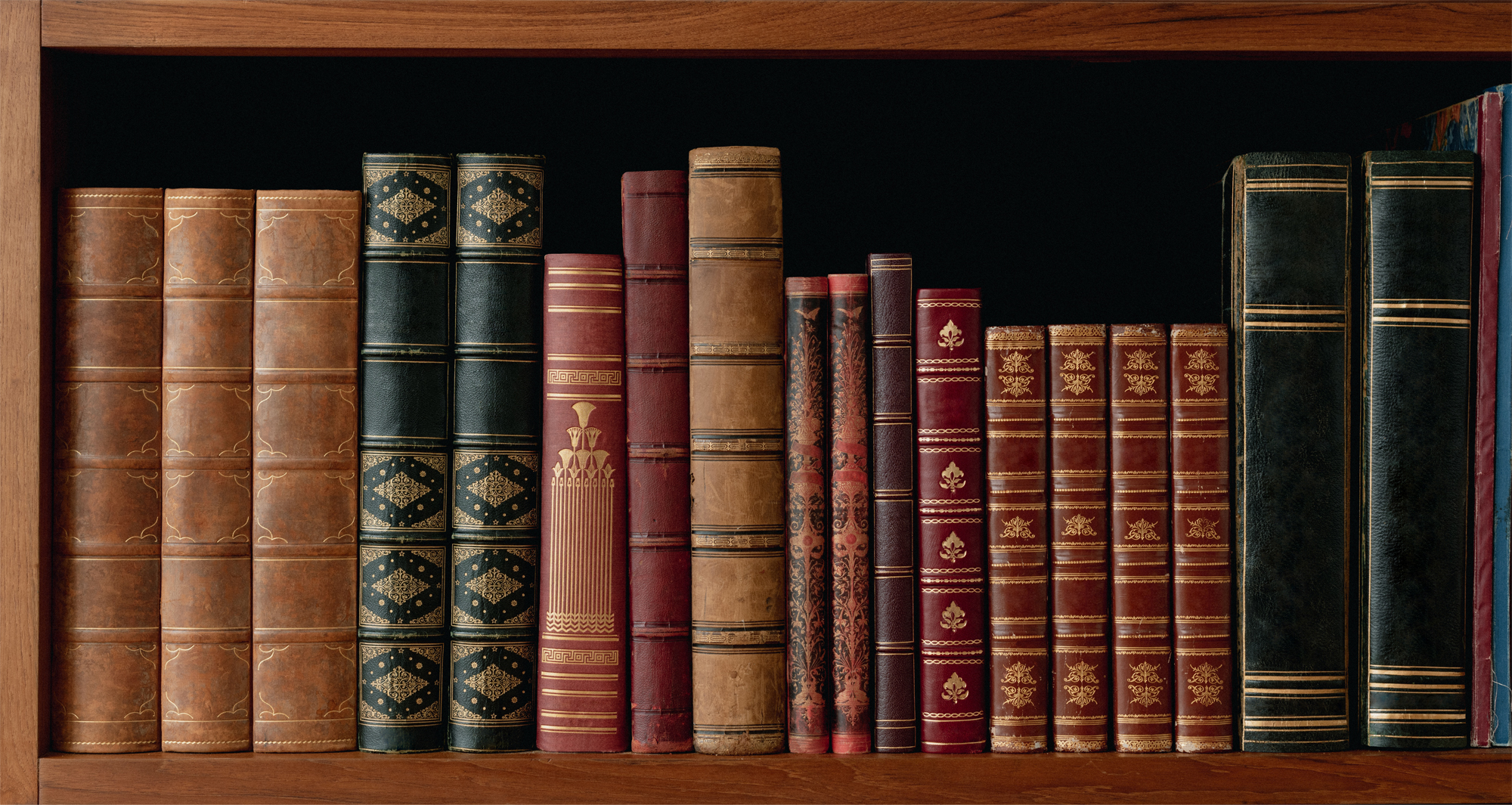Antique Wedgwood Fairyland Lustre
In Fairyland All Things Are Possible- Daisy Makeig-Jones
By Una des Fontaines
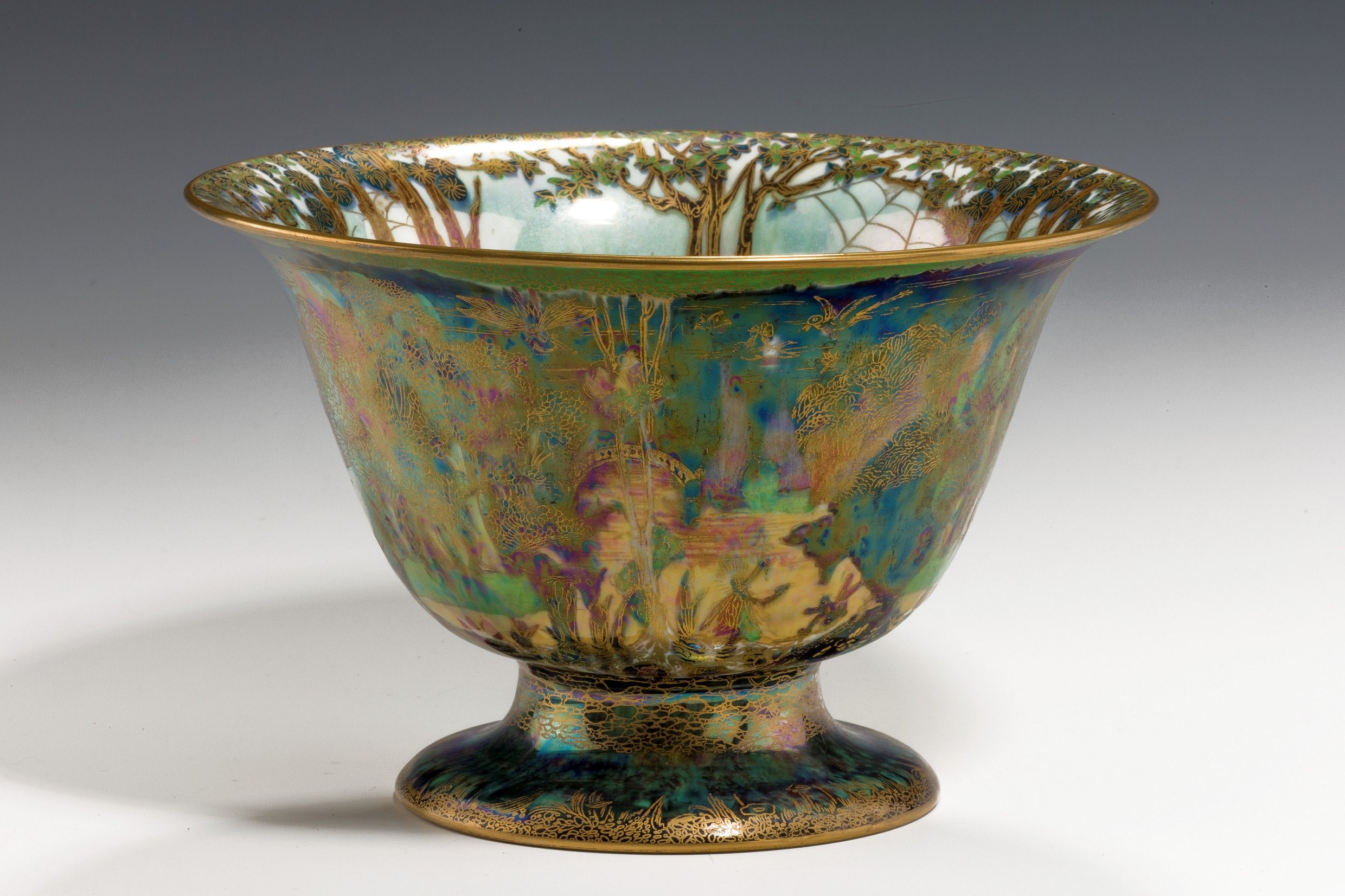 Fairyland Lustre is the name given to a type of lustrous and brightly coloured decorative china made by the factory of Josiah Wedgwood and Sons under the artistic direction of Daisy Makeig-Jones between 1916 and 1941.
Fairyland Lustre is the name given to a type of lustrous and brightly coloured decorative china made by the factory of Josiah Wedgwood and Sons under the artistic direction of Daisy Makeig-Jones between 1916 and 1941.
When Fairyland Lustre first made its appearance, the affairs of the Wedgwood company were recovering from a period of financial difficulty. A trade recession which had affected the whole pottery industry at the turn of the century, an expensive law suit against a local mining firm for subsidence damage to the factory building at Etruria and the absence of senior management during the Boer War were the principle problems that had beset the firm. Cecil Wedgwood, who became Chairman of the Board of Directors in 1905, together with his cousin Frank, gradually revived the fortunes of the company. The success of ornamental bone china during the second decade made a significant contribution to this recovery as well as representing a new departure for the firm. Hitherto, bone China had only been used in the production of tablewares and the introduction of ‘China fancies’ was an innovation. Susannah Margaretta Makeig-Jones (known as Daisy from her childhood) developed the ornamental lustre ranges which were to become market leaders.
Born on December 31st 1881 at Wath-Upon-Dearne, a Yorkshire mining village near Rotherham, Daisy was descended from a long line of minor landed gentry, farmers and the professions. The romantic, Celtic ancestors of her father and the practical, forthright Anglo- Saxon forebears of her mother combined to form the forceful and imaginative personality of the eldest of the seven children. Her father, Doctor William Makeig- Jones, had a medical practice and her mother, Anne Tofield Reeder, was a daughter of the Yorkshire solicitor. Daisy grew up in a close-knit, middle class Victorian home and from an early age displayed qualities that set her apart from her siblings. She was more demonstrative than was thought necessary in a child and more adventurous than was deemed to be proper in a young female. Daisy did however, take pleasure in reading to her brothers and sisters, particularly from the ‘Colour Fairy Books’ edited by Andrew Laing. These were later to become one of the main inspirations for her work at the Wedgwood Factory.
Education began at home with governesses, after which Daisy attended a private boarding school near Rugby. Here, lessons in art were conducted by the Arts Master from the Rugby Public School who took a great interest in encouraging her artistic talent. In 1899 the family moved to the seaside resort of Torquay in Devon where Dr Makeig-Jones had taken a new practice. Daisy continued her art training at the local Torquay (now Torbay) School of Art and for a short period went to live in London, staying with an aunt in Kensington in order to attend Art school in Chelsea. In common with an increasing number of young unmarried women of the middle classes who sought to escape from the conventions of a genteel upbringing. Daisy wished to become independent. A career which reflected her artistic aspirations seemed an obvious choice but it was some years before the opportunity arose for her to realise her ambitions.
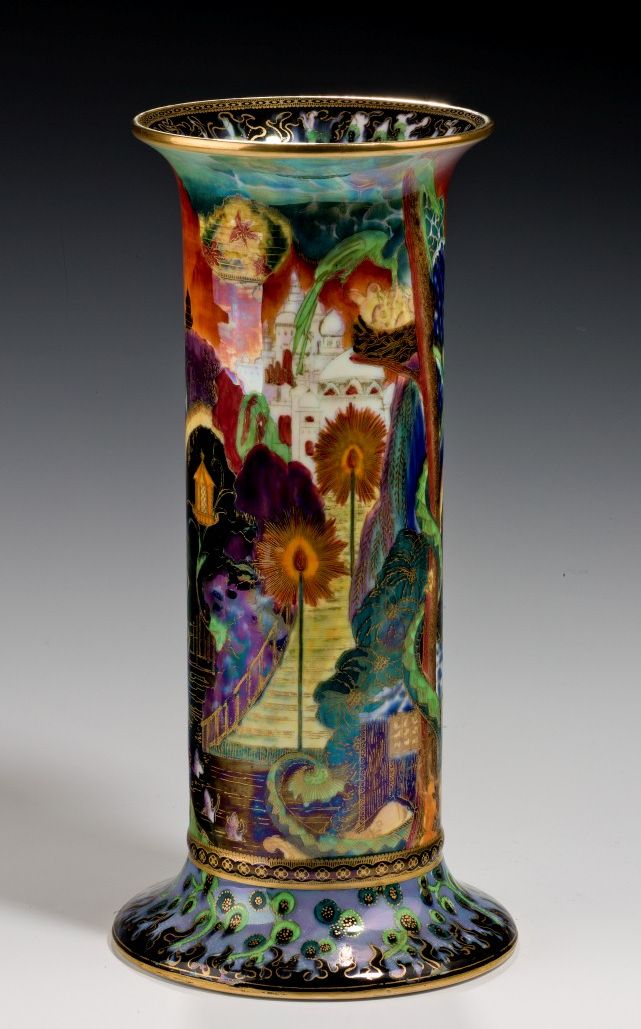 A distant relative, the Reverend Archibald Sorby, was a friend of the Wedgwood family and he suggested to Daisy that she might train to become a ceramic designer. She was immediately enthusiastic about the idea and wrote to Cecil Wedgwood who was at first reluctant to entertain such a proposal. In his reply he explained that in order to become a successful designer she would first have to learn the basic principles and processes of ceramic manufacture and that she would have to start by working on the factory floor. The long apprenticeship and the social gulf which would have existed between Daisy, a doctor’s daughter and the factory hands may have fuelled Cecil Wedgwood’s apprehension. She was not to be discouraged however, responding with characteristic determination that she had made a straightforward application to join the Wedgwood factory staff and had not consulted him as to whether she would enjoy it. The strong recommendation of her relative and her own insistence won Daisy a place in the firm. In 1909, at the age of twenty-eight, she travelled north to Staffordshire to begin her training.
A distant relative, the Reverend Archibald Sorby, was a friend of the Wedgwood family and he suggested to Daisy that she might train to become a ceramic designer. She was immediately enthusiastic about the idea and wrote to Cecil Wedgwood who was at first reluctant to entertain such a proposal. In his reply he explained that in order to become a successful designer she would first have to learn the basic principles and processes of ceramic manufacture and that she would have to start by working on the factory floor. The long apprenticeship and the social gulf which would have existed between Daisy, a doctor’s daughter and the factory hands may have fuelled Cecil Wedgwood’s apprehension. She was not to be discouraged however, responding with characteristic determination that she had made a straightforward application to join the Wedgwood factory staff and had not consulted him as to whether she would enjoy it. The strong recommendation of her relative and her own insistence won Daisy a place in the firm. In 1909, at the age of twenty-eight, she travelled north to Staffordshire to begin her training.
After a brief introduction to the basic processes of ceramic manufacture, she joined the trainee paintresses in order to learn the technique of ceramic decoration under the guidance of Art Director, John Goodwin and the Decorating Manager, Godfrey Hammersley. The chief designer at that time was James Hodgkiss and Daisy’s success with ornamental lustre owed much to his experience. After two years amongst the apprentices, she was promoted to the permanent staff in August 1911 at an annual salary of fifty-two pounds. For a time she designed nurseryware in the studio of John Goodwin but in January 1914 she finally achieved her ambition to become an established designer with a studio of her own.
Daisy did, of course occupy a rather privileged position in the factory. Her family background and the manner of her introduction to the firm had placed her on an equal social footing to the Wedgwood family. She was befriended by Cecil and Lucie Wedgwood and their two daughters. Phoebe and Audrey, the latter, who was to become a particularly close friend, was de facto manager of the works during the last two years of the First World War.
In 1928, with Audrey’s marriage to Daisy’s youngest brother Geoffrey, the family connection was inevitably reinforced. The friendship with the family did, however, cause friction between Daisy and the senior department managers in the factory. If she could not get her own way she was quite capable of by-passing her superiors and appealing directly to the Wedgwood family directors. To the ordinary factory hands she was known as a friend to the Wedgwood family and as such she was treated with considerable awe and respect mixed with caution. Daisy’s own forceful personality added to her elevated position and as the years passed she become something of a ‘character’ at Etruria.
The success of her work continued in the Twenties and further secured her unique place in the factory, but the end of the decade brought profound changes. The Wall Street slump of 1929 affected the prosperity of the whole pottery industry and clearly necessitated a rationalisation of its workforce and productions. Popular taste was moving away from richly coloured ornamentation towards more subdued tones and plainer styles. Within the Wedgwood factory itself a new generation was taking over the management of the firm. The old Chairman, Frank, who had been Daisy’s unfailing supporter, died in 1930, to be succeeded as Managing Director by his nephew Josiah.
He was an astute businessman cast in the mould of his illustrious ancestor, and he undertook a ruthless reorganisation which included the reduction of the large number of patterns in production. The lusterware designs were severely curtailed although this cannot have been a hard decision
for Josiah who disliked the style. Of the one hundred and one pattern numbers in the lustre ranges, twenty-three were cancelled immediately. Only fourteen Z patterns were retained as stock (including Z 4968 and Z 5360) although many of the remaining designs were still available on special order until 1941. Daisy herself was asked to retire in April 1931 but typically she ignored the request and continued to work on in her studio. After an inevitable acrimonious confrontation with Josiah she suddenly left in the middle of a week having arranged to have all the sample pieces of her work smashed by an assistant. She returned to the family home near Seaton in Devon. Here she devoted her time to gardening and looking after her mother, a task which she shared with two of her sisters. She died on the 21st July 1945 at the age of sixty three after a protracted illness.
Formative Influences and Inspiration
Fairyland and the Ordinary Lustre ranges proved to be the culmination of Daisy Makeig-Jones’ imaginative ideas. At the Wedgwood factory a skilled team of factory technicians and chemists sought to develop techniques to achieve the visual effects she so urgently desired.
During her early years with the Company several events occurred that were to have a formative influence on her development as a designer. Firstly, she had been an interested spectator during the experiments to imitate the Chinese decoration known in Europe as ‘bleu soufflé’ which gives the effect of an evenly grained blue surface. The factory, indeed, found commercial success in 1912 with their ‘Powder Blue’ created by using an overglaze sponging technique. Secondly, she had always been fond of strong colours, particularly orange, and her taste was reinforced by the Coronation Season at Covent Garden in 1911 when Diaghilev’s Russian Ballet burst like a vivid multi-coloured firework upon the muted colours that were then in fashion.

Gradually an idea took shape in her mind which was to transform completely the visual impact of the liquid lustres. She envisaged using a variety of decorative techniques to apply bright colours under the glaze which would complement and greatly enhance the overlying lustre colours. For example, she adapted the overglaze sponging process of the ‘Powder Blue’ decoration to form underglaze mottling and stainings in various rich colours to give an impression of depth to the designs. Occasionally, an underglaze colour was used exclusively under a complementary lustre glaze. The brilliant ornaments that were created captured the public imagination almost immediately. The first designs for the Ordinary Lustre range which date from October 1914 were decorated with simple motifs of butterflies, dragons, hummingbirds and fish.
Daisy Makeig-Jones grew up in a period which expressed its extraordinary fascination with fairytales and folklore in an outpouring of books, paintings and plays. It should not be surprising that as an adult, she drew upon these sources for inspiration. Fairies were first used in the decoration of the wares in 1916 and over sixty-two pattern numbers were assigned to the fairyland range. Daisy had already used illustrations from Hans Andersens tale of Thumbelina on designs for children’s ware. For her depiction of Fairyland she borrowed from a rich variety of published material. Among these were the illustrations by H.J. Ford in the Colour Fairy Book edited by Andrew Lang, which she enjoyed as a child, and the drawings of fired in a low-temperature ‘hardening- on’ or ‘muffle’ kiln. It was then dipped in a liquid lead glaze and fired in a high temperature ‘glost’ kiln, emerging with a glass-like surface.
Edmund Dulac, Arthur Rackham and the Danish artist Kay Neilsen who illustrated the book East of the Sun and West of the Moon, published in 1914. Daisy herself did very little original drawing for her talent lay in using the work of other artists, selecting and combining various elements into an effective design of her own.
Although Daisy left Wedgwood in 1931, the production of a very limited range of the lustre designs continued until 1941 when the remaining stock was sold off. Fairyland Lustre had been Wedgwood’s best selling line in bone china ornaments. Indeed, its impact was such that the firms hitherto dominating the ‘High Class Fancy China’ trade- Coalport, Crown Derby, Minton and Worcester- were forced to cede to Wedgwood a substantial share in the market. Daisy’s creations had not only helped to pull Wedgwood through the troughs of a financial depression, they have secured for her a unique niche on the long history of English ceramics.
What is Lustre
Lustre decoration on ceramics consists of a delicate film of metal deposited on to the surface of an already fired glaze which gives metallic reflections and may appear iridescent.
Decorative techniques used to produce Fairyland Lustre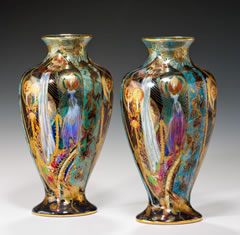
The application of the designs was achieved by employing a variety of techniques demanding great skill which required the ware to be fired five or six times. Following a first firing to give it permanent shape, the piece was ‘fitted’ with a paper transfer bearing a design freshly printed from an engraved copperplate. This plate may have been etched by Daisy herself. Larger vases required several engravings and a transferrer expertly placed the printed tissues in position, carefully rubbed down so that it adhered to the ceramic body, the tissue was floated off in water. When dry the article was ready for painting in colours.
A soft pointed brush was used to apply the paint, one colour at a time, within the printed outline. Many lustre pieces have a background of blurred colouring known as ‘stainings’, or a dappled appearance in one or more colours known as ‘mottlings’ or ‘stipplings’ which were produced by a paintress skilled in using a sponge. After completion of the painting, the article was Liquid lustres were painted on to the glazed surface in a dust free atmosphere with a flat soft hair brush using wide sweeping stokes; mother-of-pearl or iris lustre required irregular, zig-zag application to enhance the iridescent effect. The article was then fired in a low- temperature kiln and if a second coat of lustre was required it was applied over the first and then refired. The lustres used by Daisy Makeig-Jones were commercial or ‘liquid lustre,’ highly complex preparations of various metallic compounds combined with resins and volatile oils, produced by specialist laboratories. Most lustre colours result from a particular metal amongst their various constituents: orange lustre based on iron: yellow on uranium; mother-of-pearl despite its multi-colour effect from only one metal, titanium or bismuth. Purple, however, containing five metals is based on gold as are pink and ruby lustres. Pale blue was made by the paintresses at Wedgwood mixing one part of ruby lustre with four parts of mother-of-pearl lustre.
Gold painting by the ‘pluck and dust’ method was the final stage in the decorating process. Another tissue transfer from the engraved copperplate printed using a paste made from a thin oil mixed with mercuric oxide was placed in exact alignment with the original outline. The tissue was carefully ‘plucked off’, the re-printed design dusted and pure gold in powder form which adhered to it, and the ware’s edges were painted by hand with liquid gold. After a final firing, the gold outline was polished with a fine silver sand and the gilt edges burnished. The additional overglaze painting of enamels which occasionally took place would have required a further low temperature firing.
